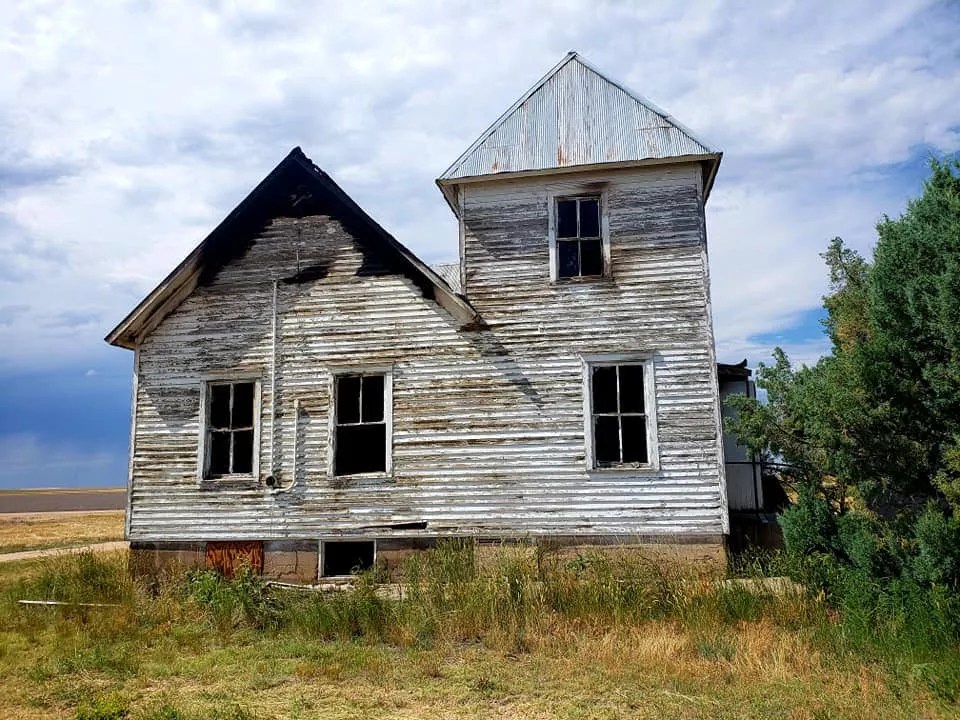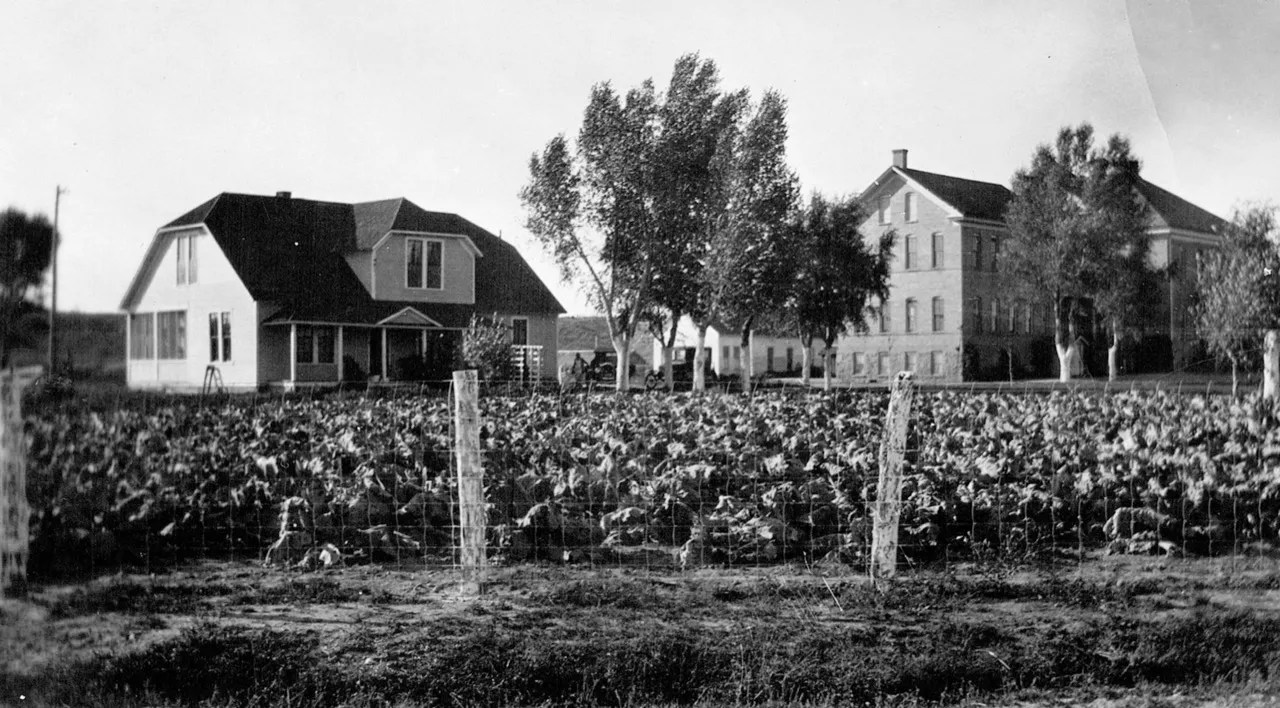
History Colorado

Audio By Carbonatix
For more than two decades, Colorado Preservation Inc. has been working with communities across the state to sage endangered historic buildings, landscapes and archaeological sites through its Endangered Places Program.
On January 30, at Saving Places 2020: A Focus on the Future, its annual convention, CPI announced four newcomers to that Endangered Places list. But at the same time, it also revealed that two sites on the list are now considered “saved,” and one has moved from “alert” to “progress.” Over the past 23 years, the program has listed 127 historic sites throughout the state; fifty sites have been saved and only seven have been lost.
The 2020 additions to Colorado’s Most Endangered Places (descriptions from CPI):

Colorado Preservation Inc.
Antelope Springs Methodist Episcopal Church (Morgan County)
“The lovely Antelope Springs Methodist Episcopal Church, located on the plains of Eastern Colorado, may have averted disaster thanks to the quick reaction of passers-by who noticed suspicious behavior and the fact that the building was on fire at 2 am on a Sunday morning last summer. This led to the quick apprehension of suspects on charges of arson and an amazing response from fire fighters who managed to save the structure before it was lost. While the interior damage was relatively contained and the ceiling beams and portions of the roof suffered damage, the structure itself remains intact and can definitely be restored, which is exactly what a small but determined group of area residents intend to do.”

Colorado Preservation Inc.
Isis Theatre (Teller County)
“Victor, Colorado, has a rich architectural heritage and a colorful and bawdy past. The Isis Theatre, located in the heart of the small downtown and its former Red Light district, epitomizes this wildly entertaining past as it serves as a panorama of the history of live theatre, motion pictures, and entertainment from the earliest era of the town up until the present. The original theater was built in 1899 but burned down along with most of town that year. It was rebuilt in 1904 and is the only theater in town and is an integral part of the National Register Historic District. The theater’s stage has been used for vaudeville shows, plays and movies and contains a vast display of memorabilia, including vintage costumes, playbills, posters, theater curtains, and its original piano. The art nouveau light fixtures in the auditorium are believed to be original to the post-fire building of 1904. There are 300 wooden, upholstered seats left in various condition, with elaborate carvings on the end-of-row seats. The site also includes two vintage arc-light projectors believed to be in working condition that are thought to have some direct link to Thomas Edison’s designs for DC voltage.”

Colorado Preservation Inc.
East Portal Camp Cabins (Gilpin County)
“The five surviving East Portal Camp Cabins, built at the east entrance to the Moffat Tunnel in Gilpin County, remain the last remnants of a “factory system” town for workers who bored through the mountain to accomplish one of the most important engineering accomplishments in U.S. history. Although not the first to conceive of a tunnel under the Continental Divide, David H. Moffat’s determination to unite Denver with the West Coast by railroad was the guiding impulse that eventually led to the building of the Moffat Tunnel. Once completed, the Moffat Tunnel eliminated 150 miles off of the transcontinental routes, allowing trains to pass through the divide with ease. The construction camps at the East Portal (Gilpin County side) were built in 1922-23 prior to the commencement of work on the tunnel itself. The five surviving East Portal Camp Cabins provide the only remaining built connection with the individuals that built the tunnel, including 28 workers who died in the process. The cabins are located at the base of the James Peak Trail, which leads into the James Peak Wilderness area, which provides easy access and the opportunity to introduce this important history to thousands of trail users.”

The Southern Ute Drum Archives
The Southern Ute Boarding School Campus (La Plata County)
“The Southern Ute Boarding School Campus (SUBSC) reflects a difficult and multi-faceted story of the Indian Boarding School Era within Colorado and American history. The federal government’s efforts to control, contain, and civilize the oldest, longest continuous inhabitants of Colorado began pre-statehood, after the Mexican-American War, with the signing of the Treaty of Abiquiu in 1849. Fighting against all odds of cultural-genocide via forced assimilation, the SUBSC also represents the resilience of Southern Ute foremothers and forefathers, descendant from the Mouache, Capota, and Weeminuche Bands of Ute, others from various Indigenous Nations-i.e. Jicarilla, Apache and Navajo. The Treaty of 1868 designated the western third of Colorado as the first Ute Reservation and illustrates the earliest mention of the United States’ ruthless agenda to eradicate Ute heritage through a military based model of American education. The military based model of Americanization pioneered by Capt. Richard Pratt, at Carlisle Indian Industrial School in Pennsylvania, was the method the United States Government intended to implement for the Southern Ute. Article 8 of the Treaty of 1868 expresses the United States government’s intent “… to insure the civilization of the bands entering into this treaty” and train the Southern Utes to become laborers and agriculturalists. The initial building of the SUBSC was constructed in 1901, after several unsuccessful education programs at Ute agencies between 1868 and 1877. In 1920, the SUBS closed, and between then and 1956 the school underwent several developments over time that reflected changing educational, tribal, and governmental and community uses. At various times in its 79-year history, the campus housed and/or educated Ute and other Indigenous students. Over the years, the SUBSC included a hospital, girl’s dormitory, dining hall, classroom buildings, a vocational school, dairy barn, and silo before closure in 1981. Today, the Main School House, Dining Hall, Girl’s Dormitory, Nurses Quarters, and the Park with the Center Flag Pole are all that remain from this controversial era. The structures are a reminder of the past that Native Americans were subjected to, but also serve as a reminder of resiliency. It is symbolic of a rich culture that the government ruthlessly tried to eradicate, attempts that were unsuccessful. It is the proof of an era in American history that was purposefully hidden and in 2020 still withheld from textbooks.”
The two sites previously listed as Endangered Places, that are now considered saves: Denver & Rio Grande Antonito Depot (Conejos County), and El Corazon de Trinidad Distinctive Commercial District (Las Animas County).
The site making progress? Dearfield African American Colony, the farming community in Weld County that a century ago was a prosperous community and today is a ghost town.
Read the entire list of Endangered Places here. The Saving Places conference continues through February 1, with an awards ceremony set for this evening at History Colorado; click here for the complete schedule.